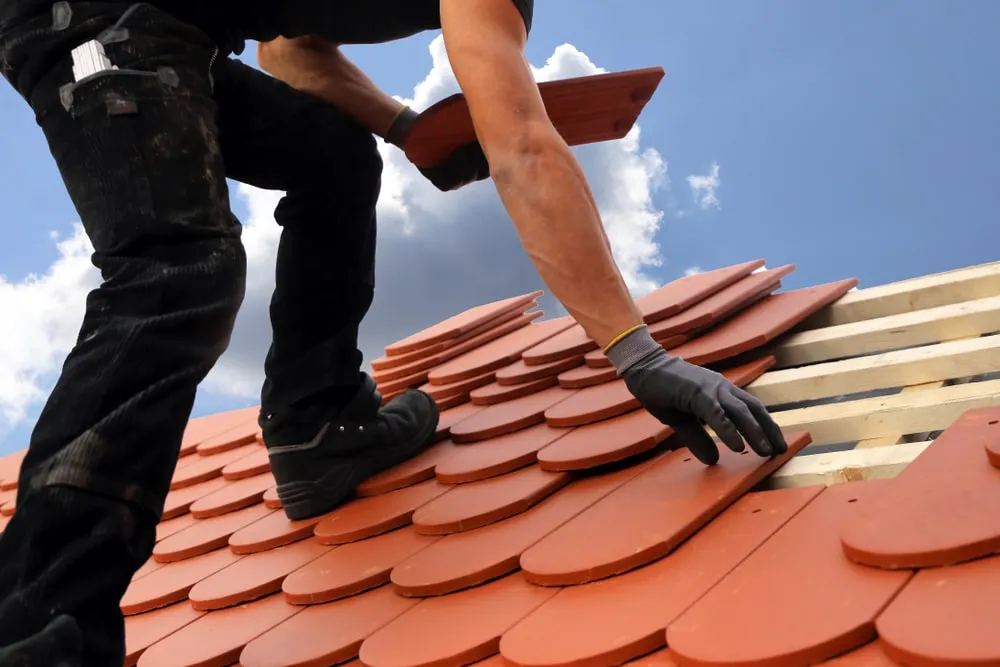Florida’s tropical climate presents unique challenges for homeowners, especially when it comes to the longevity of your roof. From hurricane winds and salt air to blazing sun and humidity, your roof takes a daily beating. So, how often should roofs be replaced in Florida?
The answer depends on several variables, including roofing material, maintenance habits, and exposure to extreme weather. In this in-depth guide, we’ll explore the expected lifespan of various roofing materials in Florida, the impact of weather, common signs that it’s time to replace your roof, and smart timing for a roofing project.
How Florida’s Climate Affects Roof Lifespan
Florida’s environment is more demanding than most, which means roofing systems deteriorate faster than in cooler, drier regions. Here’s a breakdown of the main climate stressors:
Intense UV Exposure:
Florida’s year-round sunshine causes roofing materials, especially asphalt, to dry out and break down prematurely. Shingles can crack, curl, or lose their granules, leading to faster degradation.
Humidity and Heat:
Constant moisture in the air can lead to mold, mildew, and rot, especially if attic ventilation is poor. High internal attic temperatures can also speed up deterioration.
Hurricanes and Windstorms:
Wind-driven rain, debris impact, and extreme gusts (often over 100 mph) can physically damage or dislodge roofing components. Even if a roof looks intact, underlayers may be compromised.
Salt Air (for Coastal Homes):
Homes near Florida’s coastlines deal with salt in the air, which corrodes metal elements like flashing, fasteners, and roof vents. This is particularly critical for metal or tile roofing systems.
Heavy Rainfall and Standing Water:
Poor drainage, especially on low-sloped or flat roofs, can cause water pooling and leakage, accelerating deterioration of roofing membranes and underlayment.
These factors combine to reduce the expected lifespan of many roofing systems in Florida.
Average Lifespan of Florida Roofing Materials
The type of roofing material plays a major role in determining how often your roof will need to be replaced. Below is a more detailed breakdown of expected lifespans in Florida’s climate.
| Roofing Material | Average Lifespan (National) | Expected Lifespan in Florida |
| Asphalt Shingles (3-tab) | 15–20 years | 10–12 years |
| Architectural Shingles | 20–30 years | 12–17 years |
| Metal Roofing (Aluminum, Galvanized Steel) | 40–70 years | 30–50 years |
| Clay or Concrete Tile | 50–100 years | 40–70 years |
| Flat Roof (TPO, EPDM, Bitumen) | 15–25 years | 10–20 years |
| Wood Shingles/Shakes | 25–30 years | 15–20 years |
Signs It’s Time to Replace Your Roof
Understanding the early signs of roof failure can save you from costly interior damage or emergency repairs. Here are the most critical indicators:
Shingles Are Curling, Cracking, or Missing
If your asphalt shingles are curling at the edges, cracked across the surface, or starting to go missing, this is a clear sign of material fatigue due to Florida’s sun and storms.
Water Stains or Leaks Indoors
Leaks often show up as dark water stains on ceilings or walls. Moisture infiltration can lead to mold, mildew, and wood rot in your attic or walls.
Moss, Algae, or Mold Growth on the Roof
While these may seem cosmetic, they indicate excessive moisture retention. Over time, this growth can degrade materials, especially wood or asphalt shingles.
Sagging Rooflines or Uneven Surfaces
A visibly warped or drooping section of your roof could be a result of water damage or structural failure underneath the surface.
Age of the Roof
Even if there are no visible problems, once your roof passes its expected Florida lifespan, the risk of failure increases dramatically. An old roof may look okay but fail under the next storm.
Higher Energy Bills
If cooling costs are climbing, it may be due to poor insulation or ventilation in your roofing system. An older roof lets more heat in during summer.
Granules in Gutters or Around the Home
For asphalt shingle roofs, finding granules (those small black particles) in your gutters is a sign the shingles are breaking down and losing their weatherproofing.
When Is the Best Time to Replace a Roof in Florida?
Timing your roof replacement is critical to avoid weather delays and ensure proper installation. Here’s a seasonal breakdown:
Late Winter to Spring (February–May):
This is often the best time for roof work in Florida. The weather is cooler and drier, which allows roofing crews to complete work efficiently. Plus, it’s before the start of hurricane season.
Summer (June–August):
The high heat and start of storm season make this a riskier time to schedule. Sudden downpours and high humidity can cause delays or rushed installations.
Fall (September–November):
This is a peak season for replacements, especially for homeowners reacting to summer storm damage. Demand is high, and scheduling can be tight.
Winter (December–January):
Milder weather and lower humidity make this a viable window for roof work. However, contractor availability may vary depending on the region.
Keep in mind:
- Coastal areas may see higher labor rates
- Permits and inspections may be required
- Removing an old roof adds labor and disposal costs
- Insurance may cover replacement after storm damage (check your policy)
How to Extend the Life of Your Florida Roof
Although Florida’s climate is tough on roofs, proactive care can delay the need for a full replacement. Follow these roof longevity tips:
- Schedule Annual Roof Inspections: Have a roofing expert inspect for wear, especially after major storms.
- Clear Gutters and Downspouts: Keep water flowing away from the roof and foundation.
- Trim Overhanging Branches: Falling limbs or excessive shade can cause shingle damage and mold growth.
- Ensure Proper Attic Ventilation: Hot, humid air trapped in the attic speeds up material deterioration.
- Recoat Flat or Metal Roofs: Protective coatings reflect UV rays and prevent corrosion or thermal cracking.
- Repair Small Issues Quickly: Don’t wait for a small leak to become a major problem.
Routine maintenance is always less expensive than emergency roof repairs or water damage mitigation.
How Often Should You Replace Your Roof in Florida?
While the lifespan of a roof varies by material and maintenance, Florida’s demanding climate means you’ll need to replace roofs more often than the national average. Here’s a recap:
- Asphalt Shingles: Every 10–15 years
- Metal Roofing: Every 30–50 years
- Tile Roofing: Every 40–70 years
- Flat Roofing: Every 10–20 years
If your roof is approaching its expected lifespan, or showing signs of damage, it’s smart to plan for a replacement. Doing so before hurricane season, when possible, helps protect your home and gives you peace of mind.
We’re Only One Call Away: Big G Roofing & More, Inc.
At Big G Roofing & More, Inc., your home is our top priority. We understand how Florida’s climate impacts your roof and are here to help you make informed, cost-effective decisions for your property. Whether you’re dealing with aging shingles, storm damage, or planning a full replacement, we’re only one call away to handle it all with professionalism and care.Located at 4005 NW 135th St, Opa-locka, FL 33054, United States, our team offers prompt service, honest assessments, and high-quality workmanship you can rely on. For a free consultation or to book your roof inspection, call +1 305-627-3909 or email us at office@biggroofing.com. We’ve got your roof covered, literally.

